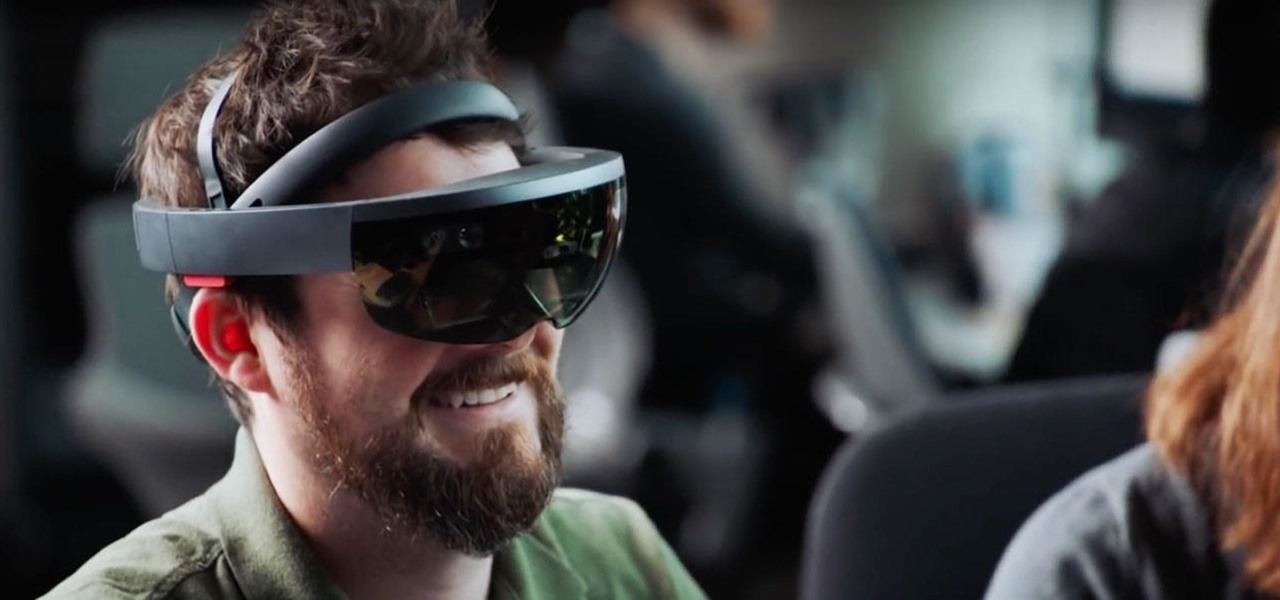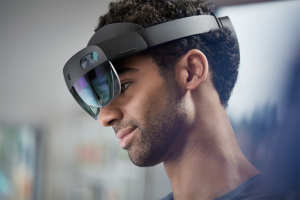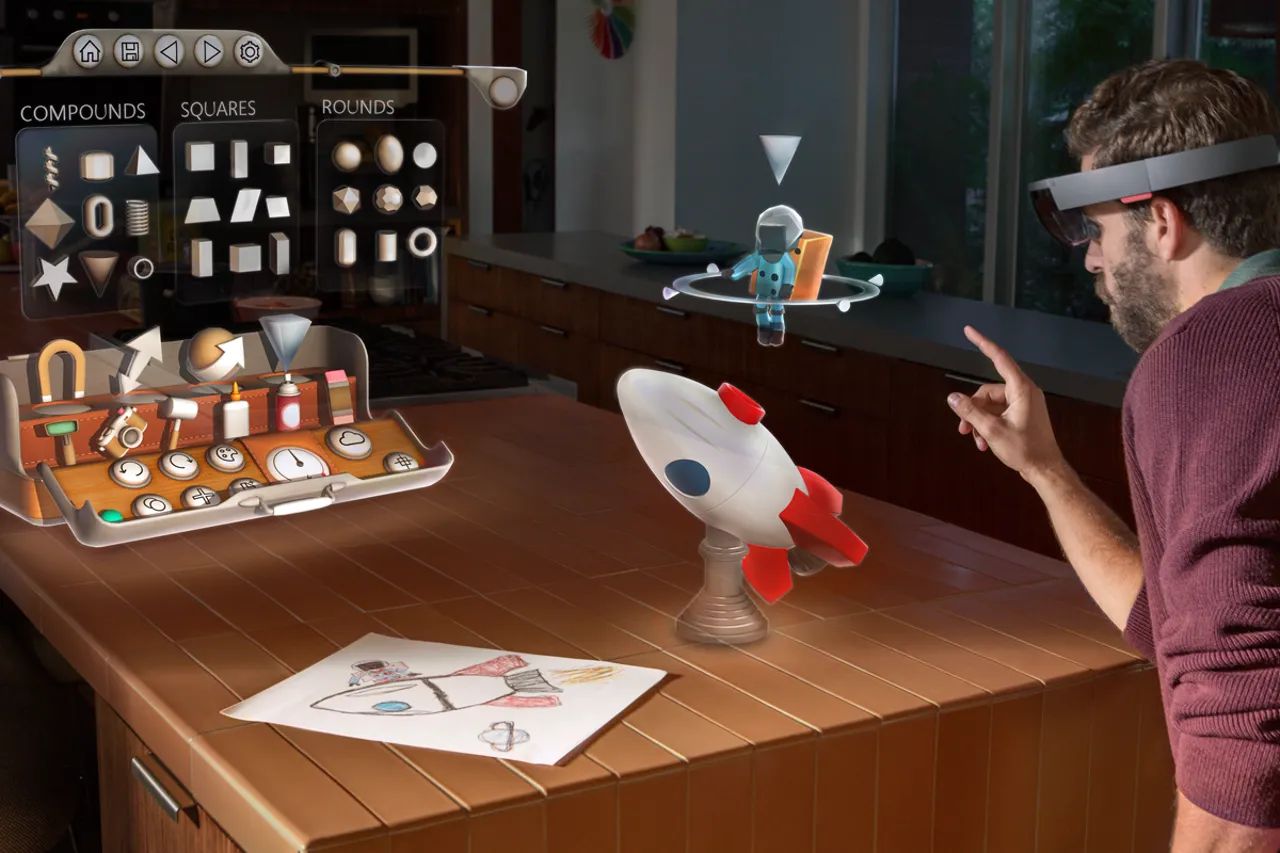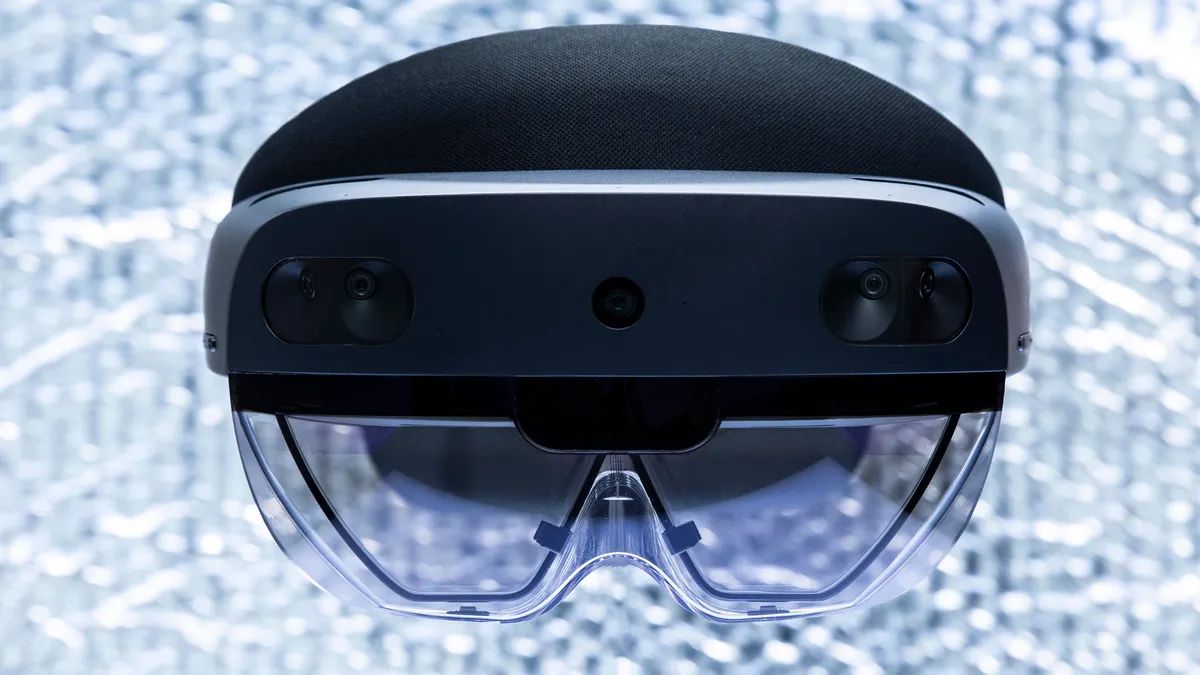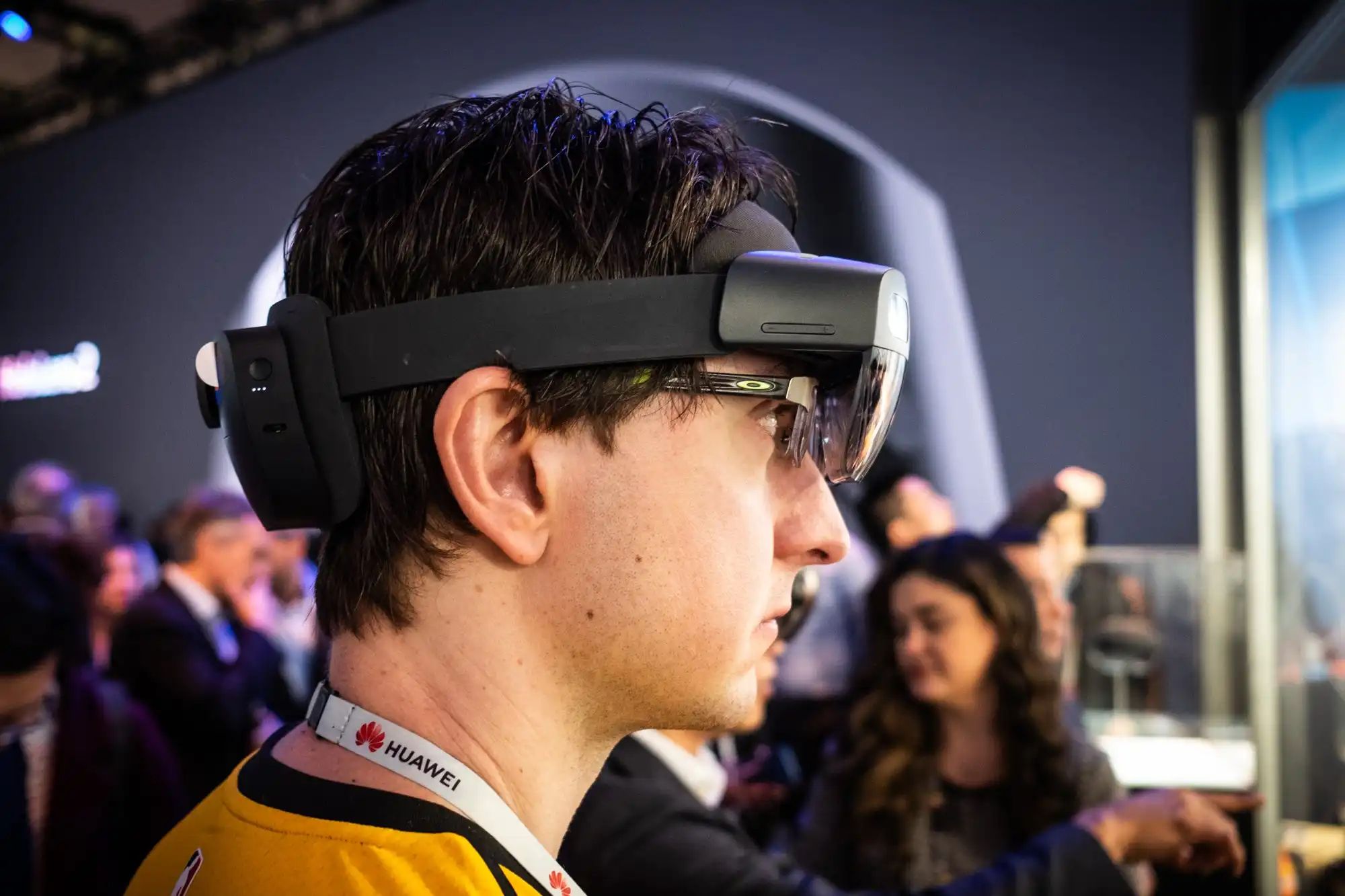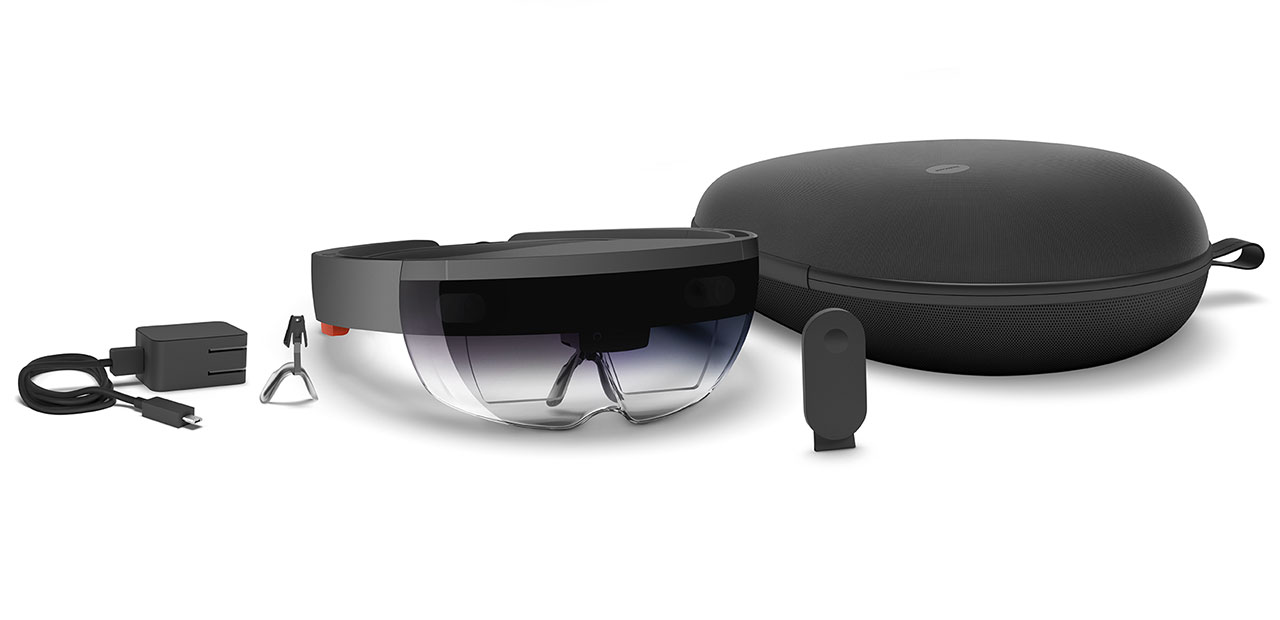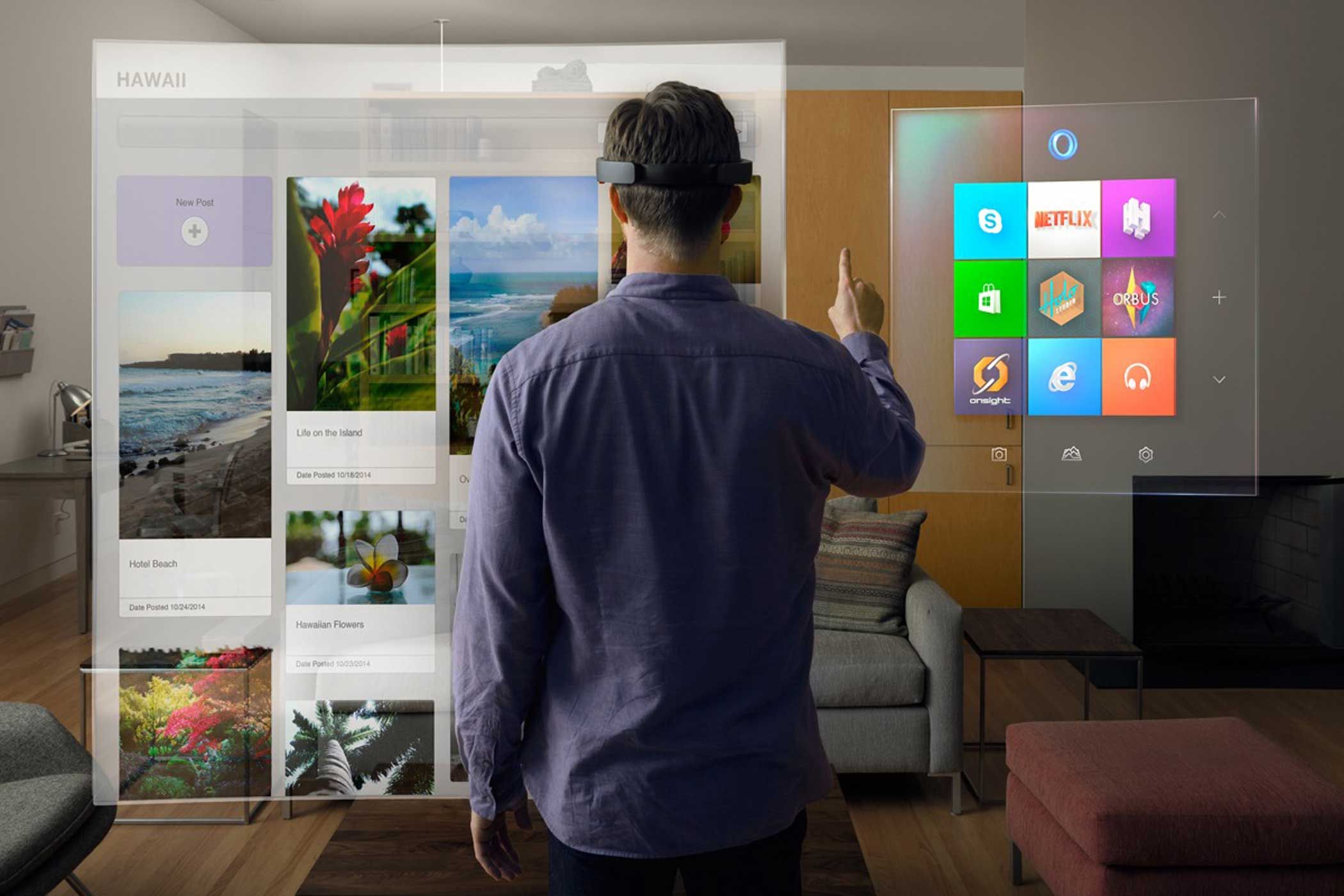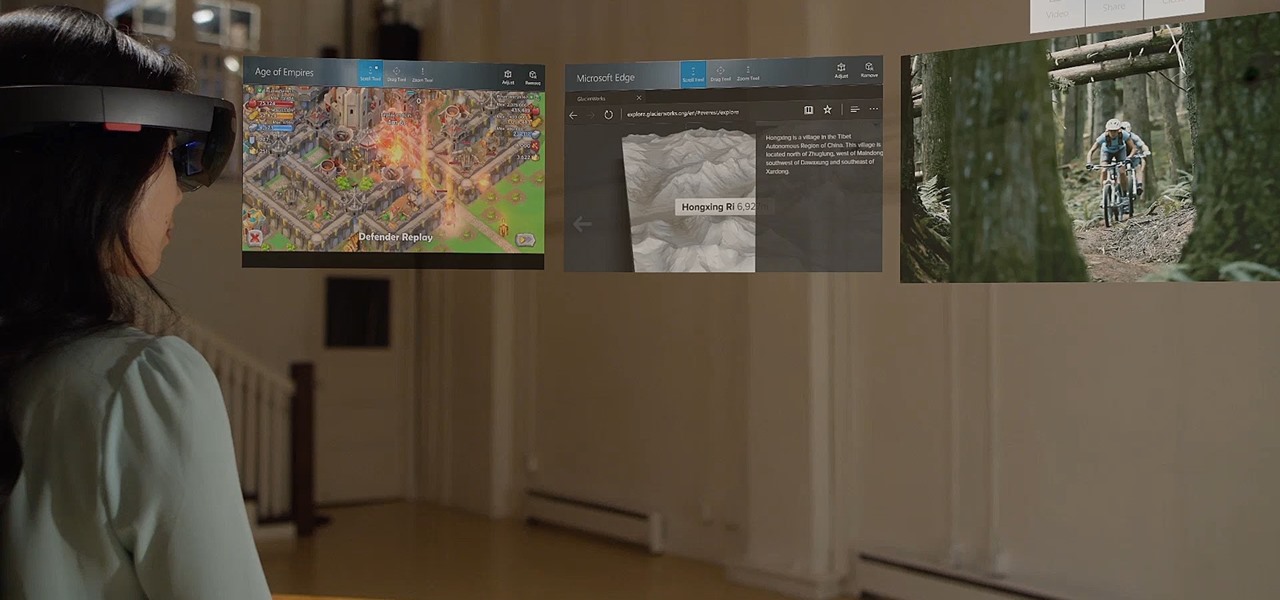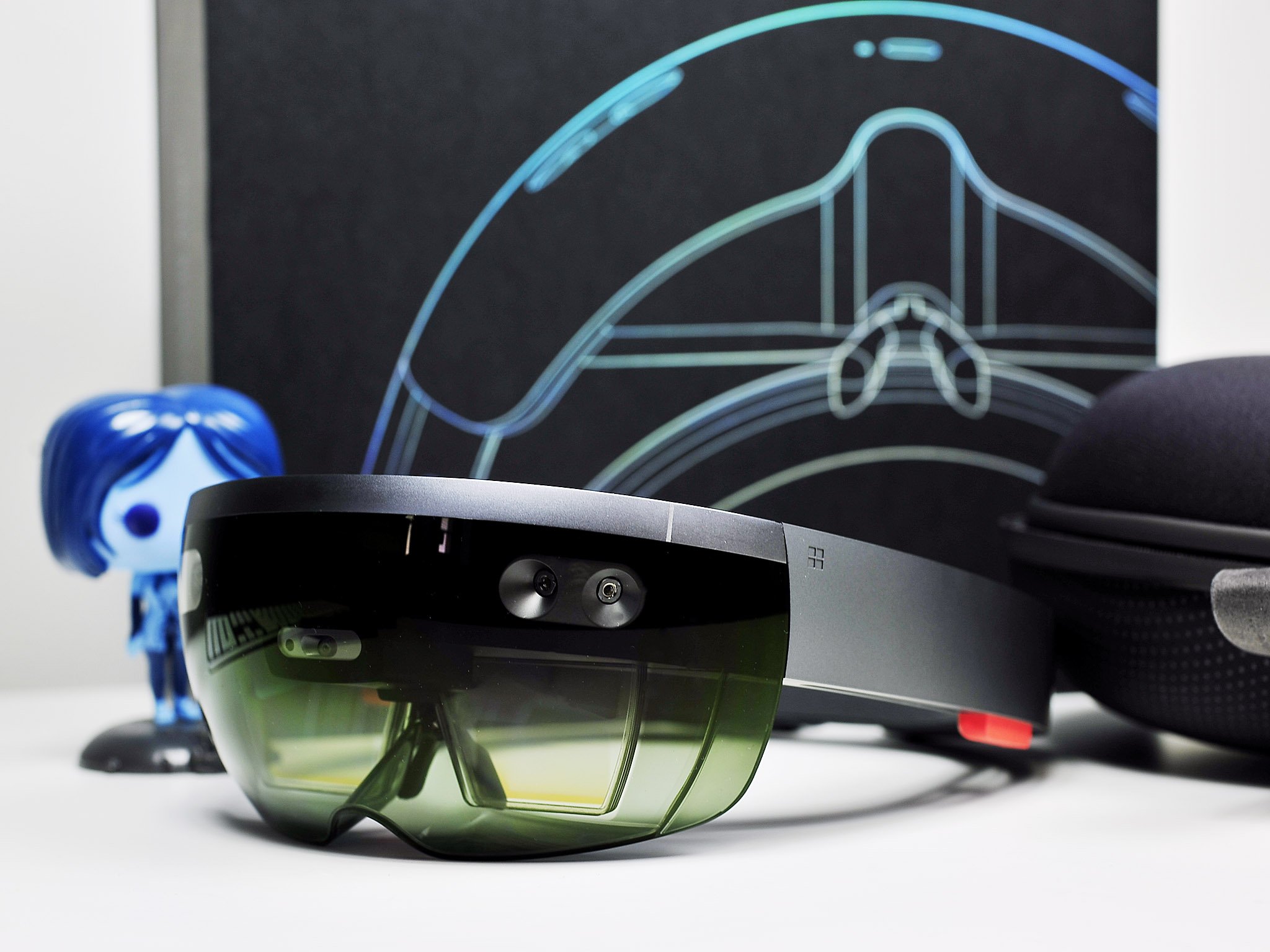Introduction
Welcome to the world of HoloLens, the groundbreaking mixed reality device developed by Microsoft. Since its initial release, HoloLens has captured the imagination of tech enthusiasts and industry professionals alike, offering a unique blend of virtual and augmented reality experiences.
With its advanced sensors, holographic displays, and intuitive gesture recognition system, HoloLens has opened up a world of possibilities for various sectors, including gaming, healthcare, education, and manufacturing. This cutting-edge device has sparked widespread interest, leading many to wonder just how successful HoloLens sales have been since its introduction.
In this article, we will explore the journey of HoloLens, from its early years to its current position in the market. We will also delve into the factors that have influenced its sales, as well as make predictions for its future growth.
But first, let’s take a closer look at what exactly HoloLens is and how it has transformed the way we interact with technology.
Understanding HoloLens
HoloLens is a cutting-edge wearable device that blends elements of virtual reality (VR) and augmented reality (AR) to create a mixed reality (MR) experience. It was first unveiled by Microsoft in 2015 and has since revolutionized the way we interact with digital content and the physical world.
Unlike traditional VR headsets, which transport the user to fully virtual environments, HoloLens overlays virtual objects onto the real world, seamlessly merging the digital and physical. This is made possible through a combination of sensors, cameras, and an advanced holographic display.
One of the standout features of HoloLens is its Spatial Mapping technology, which allows the device to understand and map out the surrounding environment in real-time. This enables the user to interact with virtual objects as if they were physically present in the room.
Another key component of HoloLens is its gesture-based control system. By using hand gestures, the wearer can manipulate virtual objects, navigate through menus, and interact with the holographic content. This natural and intuitive interaction method has contributed to the device’s popularity in various industries.
The applications of HoloLens are vast and varied. In the gaming industry, HoloLens has the potential to revolutionize gameplay by merging virtual elements with the player’s physical surroundings. Imagine battling virtual enemies in your living room or constructing elaborate structures on your coffee table.
In the healthcare field, HoloLens offers innovative solutions, such as aiding surgeons in complex procedures by providing real-time visualizations and virtual guidance. It can also assist in medical training by simulating scenarios and allowing students to practice in a safe and controlled environment.
Education is another sector that stands to benefit from HoloLens. By immersing students in interactive virtual experiences, it can enhance learning by providing a more engaging and memorable educational environment.
These are just a few examples of how HoloLens is transforming industries and pushing the boundaries of mixed reality technology. Now that we have a solid understanding of what HoloLens is and its potential applications, let’s dive into its early years and examine its sales trends.
HoloLens in the Early Years
When HoloLens was first unveiled by Microsoft in 2015, it generated a tremendous amount of excitement and anticipation. The promise of a device that could seamlessly merge the digital and physical worlds was truly groundbreaking.
However, in its early years, HoloLens was primarily marketed as a developer-focused device. It was not widely available to the general public and was mostly limited to a select group of developers and partners eager to explore its capabilities.
Despite its limited availability, HoloLens received positive reviews from early adopters who were impressed by its advanced technology and the unique experiences it offered. Developers began creating innovative applications and games, showcasing the potential of mixed reality.
During this time, HoloLens found its niche primarily in enterprise and commercial settings. Companies began exploring ways to leverage its capabilities to improve productivity, training, and collaboration. Industries such as architecture, engineering, and construction embraced HoloLens as a tool for visualizing and manipulating 3D models in real-world environments.
In 2016, Microsoft released an updated version of HoloLens, the Development Edition, which expanded the device’s availability in select markets. This move further fueled interest and provided more developers with the opportunity to harness the power of mixed reality.
As the technology matured, Microsoft introduced the Commercial Suite, targeting businesses and organizations. This edition included additional features such as enhanced security and management tools, making it more suitable for deployment in enterprise settings.
While HoloLens was gaining traction in the enterprise market, its high price point remained a barrier for many consumers. The device’s hefty price tag limited widespread adoption and relegated it to a niche market consisting mainly of early adopters and tech enthusiasts with deep pockets.
Nevertheless, the early years of HoloLens laid the foundation for its future growth. It established itself as a leader in the mixed reality space, showcasing the potential of this technology in various industries and paving the way for future advancements.
Now that we have explored HoloLens’ beginnings, let’s move on to the next section and examine its sales performance in recent years.
HoloLens Sales in 2020
In 2020, HoloLens experienced a significant increase in sales and adoption across different sectors, further solidifying its position as a leading mixed reality device. The global COVID-19 pandemic played a role in this growth, as businesses sought innovative solutions to adapt to remote work and collaboration challenges.
One area where HoloLens saw increased demand was in the healthcare industry. With its ability to provide remote assistance and virtual collaboration, HoloLens became a valuable tool for healthcare professionals. Surgeons used the device to receive real-time guidance from remote experts during procedures, while others used it for training purposes, allowing medical students to practice in simulated environments.
In the education sector, HoloLens found applications in remote learning and virtual classrooms. Teachers were able to create immersive educational experiences, bringing virtual objects and simulations into the homes of students. This helped bridge the gap created by school closures and provided a more engaging learning environment.
Furthermore, HoloLens sales saw an uptick in industries such as manufacturing and construction. The device’s ability to overlay digital models onto physical spaces proved invaluable for design reviews, training, and remote collaboration. It allowed teams to visualize projects in real-time and identify potential issues, improving efficiency and reducing costly errors.
Microsoft also made strides in expanding HoloLens’ market reach by releasing the HoloLens 2 in 2019. This updated version introduced several improvements, including a larger field of view, enhanced gesture recognition, and a more comfortable fit. These advancements, combined with the increasing demand for remote collaboration tools, contributed to the sales growth of HoloLens in 2020.
It is important to note that while HoloLens sales experienced a boost in 2020, the overall market size for mixed reality devices is still relatively small. The high cost and specialized nature of the technology limit its widespread adoption.
Nonetheless, the increased demand for remote collaboration tools and the proven benefits of HoloLens in various industries indicate a positive trajectory for its future sales. As the technology continues to evolve and become more affordable, we can expect further growth in the market for mixed reality devices.
Now that we have explored HoloLens sales in 2020, let’s move on to the next section and examine the factors that have influenced HoloLens sales over the years.
Factors Influencing HoloLens Sales
Several key factors have influenced the sales of HoloLens over the years. These factors play a significant role in determining the device’s market reach and adoption rates. Let’s explore some of the primary factors that have influenced HoloLens sales:
1. Price: One of the most prominent factors impacting HoloLens sales is its price. The device’s initial high price point limited its accessibility and restricted its market to enterprise customers and early adopters. As the technology matures and production costs decrease, Microsoft has been able to lower the price, making it more attainable for a wider audience.
2. Industry-specific Applications: HoloLens sales have been driven by the device’s ability to cater to specific industry needs. From healthcare and education to manufacturing and construction, HoloLens has found applications in various sectors. The availability of specialized software and applications tailored to specific industries has contributed to its sales growth by providing tangible value to businesses.
3. Ecosystem and Developer Support: The presence of a vibrant ecosystem and strong developer support has played a crucial role in driving HoloLens sales. Microsoft has fostered partnerships with developers and provided tools and resources to encourage the creation of innovative applications and experiences for the device. This has expanded the usefulness of HoloLens and increased its appeal to potential buyers.
4. Technological Advancements: The advancements in HoloLens technology, such as improved field of view, enhanced gesture recognition, and increased comfort, have influenced sales. These improvements have addressed limitations of the earlier versions and increased the device’s usability and desirability for both business and personal use.
5. Market Awareness and Education: Educating potential buyers about the capabilities and benefits of HoloLens has been crucial in driving sales. Microsoft’s marketing efforts and outreach programs have helped raise awareness about mixed reality technology, showcasing its potential in different industries. As more people become aware of the possibilities offered by HoloLens, the demand and sales have grown.
6. Competitive Landscape: The competition in the mixed reality market has also had an impact on HoloLens sales. While there are other players in the market offering similar devices, Microsoft has differentiated itself with its ecosystem, developer support, and applications tailored to specific industries. However, the competition has spurred innovation and driven improvements in the technology, benefiting consumers and pushing the market forward.
By considering these factors, Microsoft has been able to strategically position HoloLens in the market and drive sales. However, as the market evolves and new technologies emerge, these factors will continue to shape the sales trajectory of HoloLens.
Now that we have explored the factors influencing HoloLens sales, let’s move on to the final section and make some predictions for its future growth.
Predictions for Future HoloLens Sales
The future of HoloLens sales looks promising as the mixed reality market continues to grow and evolve. Here are some predictions for the future growth of HoloLens sales:
1. Increased Adoption in Enterprise: HoloLens has already gained traction in various industries, and this trend is expected to continue in the future. As more businesses recognize the value of mixed reality technology for productivity, collaboration, and training purposes, HoloLens is likely to see increased adoption in the enterprise sector. The device’s ability to overlay digital information onto the physical world offers unique solutions that can enhance workflow efficiency and improve decision-making processes.
2. Expansion into Consumer Market: While the consumer market for mixed reality devices is still relatively small, it has the potential for significant growth. As the technology advances and becomes more affordable, HoloLens has an opportunity to reach a broader consumer audience. Microsoft’s efforts in creating consumer-focused applications and experiences, such as gaming and entertainment, will play a crucial role in driving adoption in this market segment.
3. Continued Innovation: Technological advancements will continue to drive the growth of HoloLens sales. Microsoft is likely to invest in research and development to improve the device’s hardware, software, and user experience. This may include enhancements in areas such as field of view, battery life, comfort, and gesture recognition. These innovations will not only attract new customers but also encourage existing users to upgrade to newer models, driving continued sales growth.
4. Expansion of Developer Ecosystem: The developer ecosystem surrounding HoloLens is poised to expand further, resulting in a wider range of applications and experiences. As more developers embrace mixed reality and create innovative solutions, the value proposition of HoloLens will strengthen. This, in turn, will attract more customers who are seeking unique and immersive experiences.
5. Integration with Cloud Services: Microsoft’s expertise in cloud computing, combined with the capabilities of HoloLens, opens up exciting possibilities for integration with cloud services. The ability to access cloud-based data, applications, and processing power seamlessly through HoloLens can significantly enhance its functionality and appeal. This integration may lead to increased sales as organizations and individuals recognize the power of combining mixed reality and cloud computing.
Overall, the future of HoloLens sales looks promising. With increased adoption in enterprise settings, expansion into the consumer market, ongoing technological innovation, and a growing developer ecosystem, HoloLens is poised for continued growth and success. As mixed reality becomes more mainstream, HoloLens is positioned to be at the forefront, revolutionizing the way we interact with digital content and the physical world.
Now that we have explored the predictions for future HoloLens sales, let’s conclude our discussion on this exciting mixed reality device.
Conclusion
HoloLens has made a significant impact in the world of mixed reality, bringing virtual and augmented experiences to life. From its early years as a developer-focused device to its increased availability and adoption in various industries, HoloLens has showcased the potential of blending digital content with the physical world.
Through advancements in technology, strategic partnerships, and a robust developer ecosystem, HoloLens has overcome initial barriers and expanded its reach. The device’s applications in healthcare, education, manufacturing, and other sectors have demonstrated its practical value and opened up new possibilities for businesses and consumers alike.
In recent years, HoloLens has seen increased sales, driven by the demand for remote collaboration tools and the proven benefits it offers in industries such as healthcare and education. Technological improvements, such as the release of the HoloLens 2, have further enhanced the device’s capabilities and usability.
Looking ahead, the future of HoloLens sales appears promising. As the market for mixed reality continues to grow, HoloLens is likely to see increased adoption in enterprise settings, where it can revolutionize processes, improve productivity, and drive innovation. Additionally, as the technology becomes more affordable and consumer-focused applications gain momentum, HoloLens is expected to expand its presence in the consumer market.
Key factors, including price, industry-specific applications, ecosystem support, technological advancements, market awareness, and competition, will continue to shape HoloLens sales. By addressing these factors strategically, Microsoft can further drive the adoption and growth of HoloLens.
In conclusion, HoloLens has already established itself as a leader in the mixed reality market. With its unique capabilities, growing ecosystem, and successful applications, HoloLens is poised for continued success and is likely to play a significant role in shaping the future of how we interact with digital content and redefine the boundaries of our physical world.







